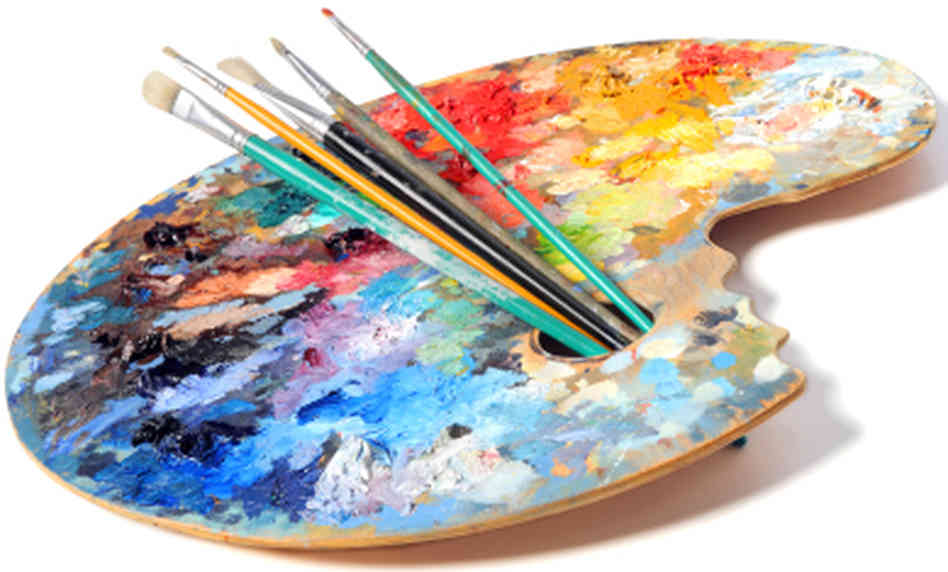Just How Trump Art Influences Public Assumption of Political Numbers
Just How Trump Art Influences Public Assumption of Political Numbers
Blog Article
Looking Into the Diverse Globe of Artistic Expression: From Surrealism to Abstract Realistic Look
In the realm of creative expression, from the dreamlike landscapes of surrealism to the elaborate play of light and kind in abstract realistic look, musicians have actually constantly pushed the borders of creativity and creative imagination. As we explore the diverse world of art, we are presented with a tapestry of styles, techniques, and approaches that test our understanding and prompt contemplation.
Surrealism: Unleashing the Subconscious
Surrealism, a progressive artistic activity of the 20th century, looked into the depths of the subconscious, revealing a world of dream-like images and unusual associations. Headed by musicians like Salvador Dali, René Magritte, and Joan Miró, Surrealism sought to test the standard ways of seeing and recognizing art. Through methods such as automatism and dream evaluation, Surrealist artists intended to take advantage of the unconscious mind to disclose surprise facts and needs.
Among the crucial components of Surrealism was the focus on the illogical and the astonishing. By combining unexpected elements in their works, Surrealist musicians aimed to produce a feeling of disorientation and shock in the customer. This interruption of logic and factor was suggested to prompt a deeper exploration of the subconscious and the secrets of the human subconscious.
Abstract Realism: Redefining Assumption
Challenging traditional imaginative boundaries, Abstract Realism redefines understanding via the combination of well-known elements with abstract types. This innovative approach to art integrates the representational accuracy of realistic look with the imaginative flexibility of abstraction, providing viewers an one-of-a-kind visual experience that motivates them to question their understanding of reality.
In Abstract Realism, musicians aim to catch the essence of their subjects while also infusing their work with a feeling of depth and complexity with abstract elements. By blending the familiar with the unfamiliar, these musicians welcome audiences to involve with their pieces on several degrees, motivating them to discover the subtleties of kind, color, and structure.

Cubism: Breaking Up Reality
Utilizing fragmented point of views and geometric kinds, Cubism transformed the creative depiction of fact in the early 20th century. This method not only deconstructed truth but likewise emphasized the flatness of the canvas, paving the method for future abstract art movements.

Cubism can be classified right into two major phases: Analytical Cubism, identified by monochromatic color design and detailed, fragmented forms; and Synthetic Cubism, which included collection elements and brighter shades right into the structures. click reference Via these distinctive phases, Cubism affected not only paint however also layout, architecture, and sculpture. trump art. Its impact resounded across the art world, inspiring artists to discover brand-new means of standing for the globe and analyzing around them
Expressionism: Emotions on Canvas
Checking out the midsts of human feelings through dazzling and meaningful brushstrokes, Expressionism became a profound artistic motion in the early 20th century. Unlike previous art movements that concentrated on showing the external world, Expressionism looked into the internal world of the artist's mind, intending to stimulate raw feelings and prompt natural feedbacks from customers.
Expressionist musicians, such as Edvard Munch, Egon Schiele, and Emil Nolde, rejected traditional concepts of charm and realism for distorting type and shade to communicate subjective sensations. Using overstated brushwork, bold shades, and altered numbers assisted produce a feeling of unease, alienation, or interest in their jobs.
Among the most well-known examples of Expressionism is Munch's "The Scream," which captures the intense anxiety and anguish of contemporary life with its swirling, distorted figure against a blood-red sky. Via their mentally billed works, Expressionist musicians looked for to test standard artistic norms and offer a home window into the stormy depths of the human soul.
Contemporary Art: Developing Viewpoints

Among the specifying features of contemporary art is its continuous development and capacity to adjust to changing social landscapes. Musicians are significantly incorporating innovation right into their technique, obscuring the lines in between the physical and digital realms. This combination of mediums enables cutting-edge means of narration and involving with target markets in a more interactive manner.
Furthermore, contemporary art commonly acts as a system for social discourse, resolving pushing concerns such as identification, national politics, and the environment. Musicians are utilizing their job to trigger vital discussions and prompt idea, clarifying the complexities of the world we more information live in. As perspectives continue to evolve, contemporary art stays a influential and vibrant pressure in forming our cultural landscape.
Conclusion
To conclude, the globe of imaginative expression incorporates a large variety of styles and movements, each with its own unique technique to communicating meaning and feeling. From surrealism's expedition of the subconscious to abstract realism's redefining of understanding, and from cubism's fragmentation of fact to expressionism's portrayal of emotions, art remains to progress and test viewpoints - trump art. find Contemporary art mirrors the ever-changing world we live in, using new ways to translate and recognize the intricacies of our fact
As we check out the multifaceted globe of art, we are provided with a tapestry of designs, strategies, and viewpoints that challenge our understanding and provoke reflection. Its effect reverberated throughout the art world, motivating artists to discover new means of standing for the world and analyzing around them.

Report this page